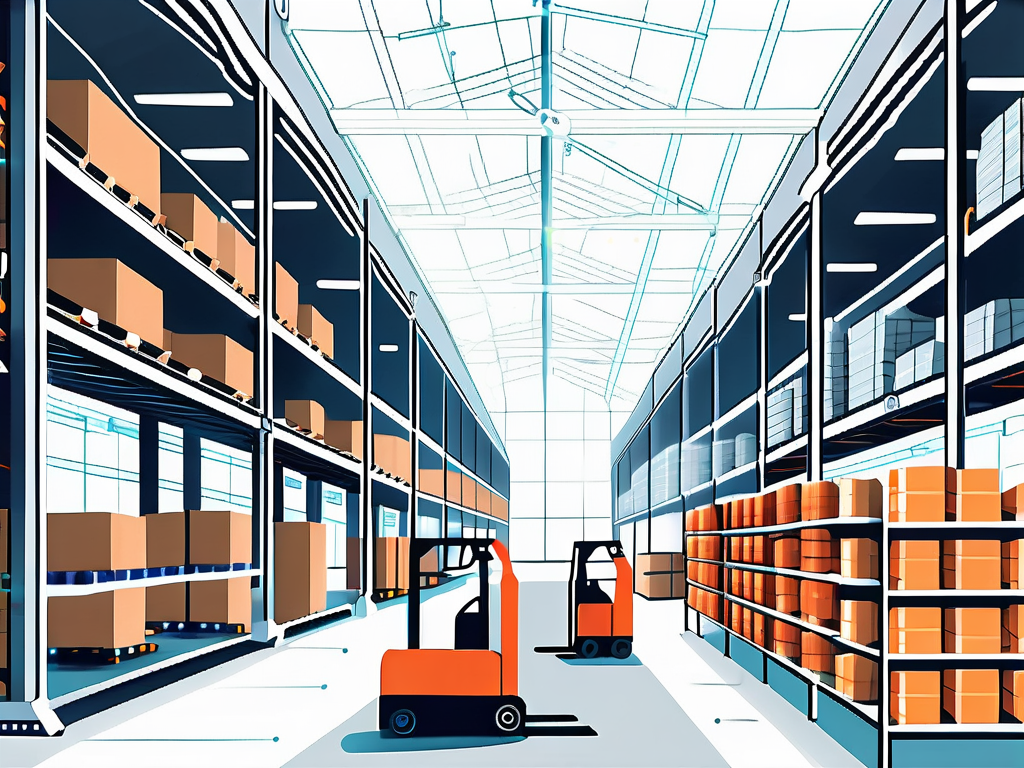
Warehouse efficiency is a crucial aspect of any successful business operation. In today’s fast-paced and highly competitive market, organizations need to continuously evaluate and improve their warehouse processes to stay ahead of the curve. This article will explore ten warehouse improvement ideas that can help increase efficiency and optimize operations.
Understanding Warehouse Efficiency
Before diving into specific improvement ideas, it’s essential to understand the importance of warehouse efficiency and the key factors that impact it.
Efficient warehouse operations are the backbone of any successful supply chain management system. They play a crucial role in ensuring timely delivery of products, minimizing storage costs, and optimizing overall operational performance. A well-organized and efficient warehouse not only enhances productivity but also improves the overall customer experience.
The Importance of Warehouse Efficiency
Efficient warehouse operations directly contribute to a company’s bottom line. By improving efficiency, businesses can reduce costs, improve customer satisfaction, and gain a competitive edge in the market.
Moreover, in today’s fast-paced business environment, where customer expectations are constantly evolving, warehouse efficiency is more critical than ever. Companies that prioritize efficiency can respond quickly to market demands, adapt to changing trends, and stay ahead of the competition.
Key Factors Impacting Warehouse Efficiency
Several factors influence warehouse efficiency, including workforce productivity, inventory management, technology utilization, and warehouse layout design. By addressing these factors, organizations can streamline operations and achieve greater efficiency.
Workforce productivity is a key driver of warehouse efficiency. Training employees on best practices, implementing performance incentives, and optimizing work schedules can significantly enhance productivity levels. Effective inventory management is another crucial factor that directly impacts efficiency. By implementing robust inventory tracking systems, adopting just-in-time inventory practices, and conducting regular audits, organizations can minimize stockouts, reduce excess inventory, and improve order fulfillment accuracy.
Streamlining Warehouse Operations
Implementing lean principles and leveraging automation can significantly streamline warehouse operations and enhance efficiency.
Efficient warehouse operations are crucial for businesses to meet customer demands and stay competitive in the market. By optimizing processes and reducing waste, companies can improve their overall operational performance and increase customer satisfaction.
Implementing Lean Principles in Warehousing
Lean principles focus on eliminating waste and optimizing processes. By adopting lean practices in warehousing, businesses can reduce downtime, minimize errors, and improve overall operational efficiency.
One key aspect of lean principles is continuous improvement. This involves constantly evaluating and refining processes to ensure maximum efficiency. By fostering a culture of continuous improvement, companies can adapt to changing market demands and maintain a competitive edge in the industry.
The Role of Automation in Warehouse Operations
Automation technologies, such as robotic picking systems and automated conveyor systems, can streamline order fulfillment processes, increase accuracy, and reduce labor costs. Integrating automation into warehouse operations can lead to significant efficiency improvements.
Furthermore, automation can also enhance workplace safety by reducing the need for manual labor in hazardous or physically demanding tasks. By automating repetitive and strenuous activities, companies can create a safer work environment for their employees and minimize the risk of workplace injuries.
Optimizing Warehouse Layout for Efficiency
The design and layout of a warehouse play a crucial role in its overall efficiency. By carefully considering warehouse design principles, businesses can maximize space utilization and streamline material flow.
One important aspect to consider when optimizing warehouse layout is the integration of technology. Implementing automated systems such as conveyor belts, robotic picking systems, and inventory management software can greatly enhance efficiency. These technologies not only speed up processes but also reduce human error, leading to smoother operations and improved accuracy in inventory management.
The Impact of Warehouse Design on Efficiency
An effective warehouse design minimizes travel time, reduces congestion, and ensures easy accessibility to products. By planning an efficient layout, businesses can save time and increase productivity.
Furthermore, the layout of a warehouse can also impact employee satisfaction and safety. A well-designed warehouse with clear aisle markings, proper lighting, and ergonomic workstations can contribute to a more comfortable and safe working environment. This, in turn, can boost employee morale, reduce the risk of workplace injuries, and increase overall productivity.
Strategies for Warehouse Layout Optimization
Organizing products based on demand frequency, implementing efficient picking paths, and utilizing space-saving storage solutions are key strategies for optimizing warehouse layout. These measures can lead to substantial efficiency gains and cost savings.
In addition to these strategies, implementing a continuous improvement process is essential for maintaining an efficient warehouse layout. Regularly reviewing and analyzing key performance indicators, seeking feedback from warehouse staff, and staying updated on industry best practices can help identify areas for further optimization and ensure that the warehouse layout remains efficient and effective in the long run.
Enhancing Inventory Management
Effective inventory management is critical for maintaining high warehouse efficiency and ensuring an uninterrupted supply chain.
One key aspect of inventory management that is often overlooked is the importance of supplier relationships. Establishing strong partnerships with reliable suppliers can help streamline the procurement process, reduce lead times, and ensure consistent product availability. Regular communication and collaboration with suppliers can also lead to better forecasting accuracy and inventory planning.
The Role of Inventory Management in Warehouse Efficiency
Accurate inventory tracking, demand forecasting, and proper stock rotation are essential for preventing stockouts, minimizing excess inventory, and optimizing order fulfillment processes.
Another critical factor in warehouse efficiency is layout optimization. By strategically organizing inventory storage locations based on demand patterns, picking frequencies, and product characteristics, warehouses can minimize travel time, reduce picking errors, and improve overall operational efficiency.
Techniques for Effective Inventory Management
Implementing cycle counting, using barcode or RFID technology for inventory tracking, and adopting inventory optimization techniques can significantly improve inventory management accuracy and overall warehouse efficiency.
In addition to these techniques, leveraging data analytics and machine learning algorithms can provide valuable insights into demand patterns, seasonality trends, and inventory optimization opportunities. By harnessing the power of data-driven decision-making, companies can proactively address inventory challenges, reduce carrying costs, and enhance customer satisfaction.
Investing in Warehouse Technology
In today’s digital era, leveraging technology solutions can revolutionize warehouse operations and boost efficiency.
As the e-commerce industry continues to thrive and customer expectations evolve, investing in warehouse technology has become more crucial than ever. The seamless integration of technology into warehouse operations can streamline processes, minimize errors, and enhance overall productivity.
The Impact of Technology on Warehouse Efficiency
Warehouse Management Systems (WMS), inventory control software, real-time tracking systems, and advanced analytics tools can provide valuable insights and enable data-driven decision-making, leading to improved efficiency and operational excellence.
Furthermore, the implementation of automation technologies such as robotics and artificial intelligence (AI) can optimize tasks like picking, packing, and sorting, reducing manual labor and increasing throughput. These cutting-edge solutions not only improve efficiency but also enhance the safety and accuracy of warehouse operations.
Choosing the Right Technology for Your Warehouse
When investing in warehouse technology, it’s essential to consider the specific needs and goals of your business. Analyze different options, evaluate costs, and select the solutions that align with your warehouse requirements and long-term growth strategy.
Moreover, staying abreast of emerging technologies and industry trends is crucial for making informed decisions about technology investments. Collaborating with technology experts and attending industry conferences can provide valuable insights into the latest innovations shaping the future of warehouse management.
By implementing these ten warehouse improvement ideas, businesses can significantly boost efficiency, cut costs, and provide better service to their customers. Embracing continuous improvement and leveraging technology will empower organizations to stay competitive in the dynamic world of logistics and supply chain management.



